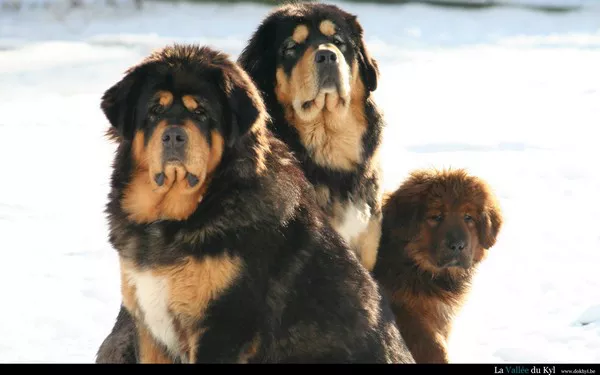The Tibetan Mastiff is a majestic and enigmatic breed known for its imposing presence and protective nature. Originating from the high Himalayan regions of Tibet, these dogs have been cherished by locals for centuries. While the Tibetan Mastiff is well-known for its overall appearance and temperament, there’s a fascinating aspect that many may not be aware of – the existence of different types or variations within this breed. In this article, we will delve into the world of Tibetan Mastiffs and explore the various types and characteristics that make each one unique. From coat colors to regional variations, this guide aims to provide you with a detailed understanding of the diversity within this remarkable breed.
1. Coat Colors and Patterns:
Tibetan Mastiffs come in a range of coat colors and patterns, each with its own distinct charm.
Solid Black: Some Tibetan Mastiffs boast a solid black coat, exuding a commanding and striking presence.
Red and Gold: These colors are quite common and often associated with Tibetan Mastiffs. The shades can vary from deep red to golden hues.
Sable: Sable-colored Tibetan Mastiffs feature a mix of black-tipped hairs on a lighter background, creating a beautiful and unique appearance.
Blue and Gray: A rarer coat color, the blue and gray Tibetan Mastiffs possess a more subdued yet captivating look.
Bicolor: Some Tibetan Mastiffs may have two distinct colors, often combining black with another shade like red or gold.
2. Regional Variations:
The origin of a Tibetan Mastiff plays a significant role in determining its specific characteristics.
Tibetan Plateau: Mastiffs hailing from the Tibetan Plateau are renowned for their resilience to extreme weather conditions. They tend to have a thicker, denser coat.
Indian and Nepalese Varieties: Tibetan Mastiffs from regions like India and Nepal may have a leaner build and a slightly different appearance compared to their Tibetan counterparts.
Nomadic Tribes: Nomadic tribes in Tibet often bred Mastiffs for specific purposes like herding or guarding. These Mastiffs may exhibit traits tailored to their historical roles.
3. Size and Build:
Tibetan Mastiffs come in a range of sizes, although all are impressively large.
Male Tibetan Mastiffs typically stand between 26 to 28 inches at the shoulder and weigh 90 to 150 pounds.
Females are slightly smaller, standing at 24 to 26 inches and weighing 70 to 120 pounds.
In some regions, you may find larger or smaller variations, influenced by local breeding practices and intended functions.
4. Temperament and Behavior:
The temperament of Tibetan Mastiffs can vary based on their lineage and upbringing.
Some Tibetan Mastiffs are known for their protective and aloof nature, making them excellent guard dogs.
Others exhibit a more gentle and friendly disposition, making them great family pets.
Socialization and training play a crucial role in shaping their behavior, regardless of their lineage.
5. Health Considerations:
Different types of Tibetan Mastiffs may have varying susceptibility to certain health issues.
It’s essential for prospective owners to be aware of common health concerns, such as hip dysplasia and bloat, and to work with reputable breeders who prioritize the health of their dogs.
Regular veterinary check-ups and a balanced diet are essential to ensure the well-being of your Tibetan Mastiff.
In conclusion, the world of Tibetan Mastiffs is a fascinating one, filled with diverse coat colors, regional variations, sizes, temperaments, and health considerations. By considering their unique traits and characteristics, you can choose the perfect Tibetan Mastiff that matches your lifestyle and preferences.


